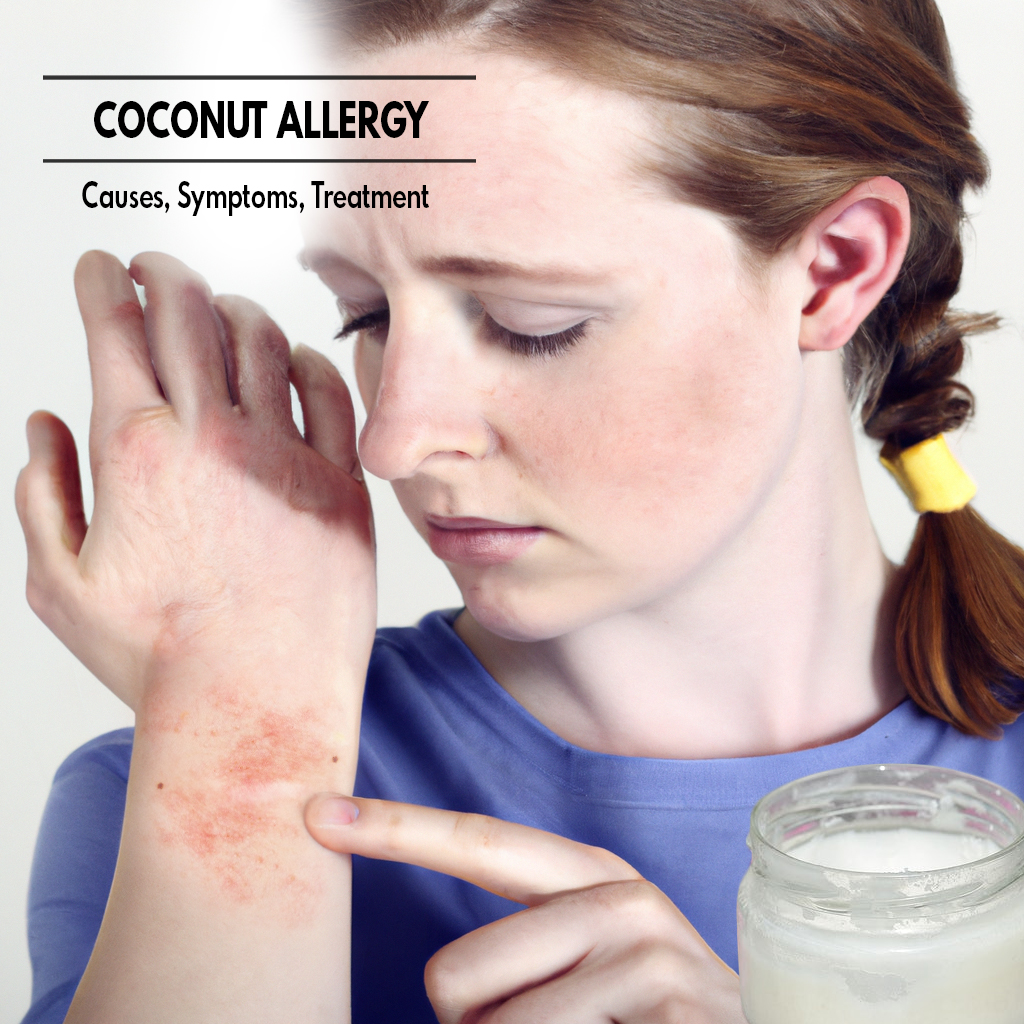What is Coconut Allergy?
A person with a coconut allergy may have an allergic reaction soon after consuming coconut. Other food items containing coconut may also be considered a threat.
As a response to the threat, the immune system of the body may attack the allergen by producing IgE antibodies that bind to the protein in the coconut. This may trigger the immune system, causing the reaction.

A study shows coconut allergy to be rare, but it is considered to be the most common allergen present in skincare products.(1)
It is also noted that coconut is present in natural moisturizers for babies, especially those with atopic dermatitis.
Research was done in 2017 and the following coconut allergens were seen:(3)
- Coc n2, a 7S globulin
- Coc n4, an 11S globulin
An allergic reaction to coconut on the skin is called contact dermatitis and is more common than food allergies to coconut.
Sometimes coconut allergies are not true allergies rather but responses to other foods a person may be allergic to such as pistachios, walnut, and other tree nuts which have similar protein structures. A person with a tree nut allergy should consult a doctor before adding coconut to the diet.
Coconut allergy being rare, it is not clear whether a person with a coconut food allergy should include or exclude coconut in the skin care regimen.
Symptoms of Coconut Allergy
People with coconut allergy may have symptoms after eating coconut or drinking coconut water. The reacting symptoms include:
- Skin reaction causing hives, rashes, or eczema
- Gastrointestinal symptoms including nausea, stomach pain, diarrhea and vomiting
- Airway symptoms including wheezing, coughing and runny nose
- Angioedema with lead to swelling of lips, tongue, and face
In some cases, there may be severe anaphylaxis symptoms which may lead to the following symptoms:
- Itching
- Hives
- Vomiting or diarrhea
- Dizziness
- Shortness of breath
- Swelling of throat
- Rapid and slow heart rate
- Feeling confused and anxious
According to the American Academy of Allergy Asthma and Immunology (AAAI), these symptoms are experienced by people on coming in contact with even a small amount of coconut. (2)
Coconut Allergy and Contact Dermatitis
Allergic contact dermatitis symptoms may appear as soon as someone applies a coconut-derived product to the skin. There may be symptoms that include itchy blisters, and rashes 24-96 hours after exposure to the product.
Sometimes, initially, a person may tolerate the contact allergen. After repeated exposure people with other allergic conditions such as eczema may develop contact dermatitis. The person may notice an immediate change in the skin. There may be discolored itchy rashes on the hands. It may take several days for coconut-induced contact dermatitis to resolve.
Diagnosis of Coconut Allergy
Proper diagnosis is the first step toward treating coconut allergy. The following examination is recommended by the doctor.
Medical history: A person’s medical history is taken to understand the symptoms and causes of coconut allergy.
Physical examination: A physical examination of a person’s eyes, ears, nose, throat, chest, and skin is done.
A lung function test is ordered to check how a person breathes. A doctor may also conduct skin, patch, or blood tests to accurately diagnose allergy symptoms.
Skin Prick Test: A tiny drop of allergen is placed on the skin with a needle or sharp plastic device through the allergen droplets. A person, if allergic may develop discoloration, itching, and swelling at the prick site within 15 minutes.
Patch Test: This may help a doctor determine which specific coconut is causing dermatitis. A small amount of allergen is placed on the skin and covered with a bandage. Then the area is examined for skin reaction 48-96 hours after. There may be a skin rash if an allergy is present.
Blood Test: If a person is not able to tolerate skin tests, blood samples may be taken to measure the number of antibodies against coconut allergens in the blood.
Treatment for Coconut Allergy
The best treatment option is to avoid coconut and coconut-based products.
There is otherwise no treatment for it, and neither are there any medications to avoid getting allergic reactions. Antihistamines may be used by doctors to reduce any symptom worsening.
Also, the following habits should be adopted:
- Read food labels before consuming anything
- Ask about the ingredient to the family members if going to anyone’s place for meals
- Carry an auto-injectable EpiPen for emergency situations.
Coconut allergy is rare and the symptoms may be mild to severe. The best way to prevent it is to avoid food and products containing coconut.
